ABOUT R&A PAY
R&A Pay establishes, maintains and pays military retirees, and their eligible surviving spouses and other family members.
Who We Are, What We Do
Who to Contact? DFAS, the VA or the Military
How Long Does It Take?
Retiree Newsletter
Survivor SBP Newsletter
Find out the latest news and other helpful information.
Retiree payments will be made as scheduled on November 1, 2022. Annuitant payments will be made as scheduled on November 1, 2022.
The 2023 Cost of Living Adjustment (COLA) for military retirees and SBP annuitants is expected to be officially announced in November. We will post the information here when the information is available.
We have new, helpful guides to assist in navigating the use of the online tools available for retirees and SBP annuitants.
Click here to download the PDF guide for retirees
Click here to download the PDF guide for SBP annuitants
We have new helpful tips for you if you are new to Retired Pay: Quick links to the pay calendar, information about taxes and SBP, the VA Waiver, CRDP, CRSC, and more!
Right click HERE and choose save as to download your PDF today!
January 2023 marks the third and final phase of the SBP-DIC Offset Phased Elimination, in accordance with the National Defense Authorization Act for Fiscal Year 2020, which modified the law that requires an offset of Survivor Benefit Plan (SBP) payments for surviving spouses who are also entitled to Dependency and Indemnity Compensation (DIC) from the Department of Veterans Affairs (VA).
In the third and final phase that begins January 1, 2023, the SBP-DIC offset will be fully eliminated. That means spouses will begin to receive their full SBP monthly payments beginning with their January 2023 entitlement, which will be paid on February 1, 2023.
See our full range of FAQs on the SBP-DIC News webpage.
*Note: the change in the law does NOT affect the amount of DIC you receive from the VA. You should continue to receive your normal DIC amount from the VA.*
The National Defense Authorization Act for Fiscal Year 2020 directed that as of January 1, 2023, the Optional Annuity for Dependent Children will be eliminated and the SBP annuity payment must revert to the surviving spouse (if the spouse submits documentation and is eligible).
If you are the surviving spouse of an Active Duty/Line of Duty member who requested to have the Survivor Benefit Plan (SBP) annuity paid directly to an eligible dependent child or children and you have NOT submitted a Spouse Eligibility Packet, we need your information as soon as possible. Please download, fill out and submit the eligibility packet from our special focus webpage as soon as possible: https://www.dfas.mil/sbp2023childoptrev
If you are the surviving child (or the parent or guardian of a surviving child) of an Active Duty/Line of Duty member whose surviving spouse requested to have the Survivor Benefit Plan (SBP) annuity paid directly to you and you are currently receiving the monthly SBP annuity payment, we have started sending informational letters about what will happen in 2023. Please see our special focus webpage for examples of the letters and more information: https://www.dfas.mil/sbp2023childoptrev
Please check our special focus webpage for news and information regarding this change and transition. We will post updates on this webpage: https://www.dfas.mil/sbp2023childoptrev
We will post updates on this webpage: https://www.dfas.mil/sbp2023childoptrev
The 216-522-5955 local phone number is no longer available to use (after July 1, 2022).
The DSN number to reach Retired & Annuitant Pay Customer Service also changed. The new DSN number is 699-0551.
This change does NOT affect the toll-free number (1-800-321-1080). The toll-free number remains the same.
Please see the convenient options for getting a 1099-R reissue in the December issue of our Retiree Newsletter.
We have good news for retirees and annuitants who need a duplicate IRS 1099-R mailed to a non-U.S.A. address!
Our convenient askDFAS online tool for requesting a duplicate 1099-R will now work for foreign addresses. The tool is available at (the link is case-sensitive): http://go.usa.gov/xsAbM
The tool is available at (the link is case-sensitive): http://go.usa.gov/xsAbM
Military retired pay is paid for many different reasons under many different laws. There are differences in the types of pay a military retiree might receive and the tax laws that apply to them. Whether a portion or all of an individual’s military retired pay is subject to federal income taxes depends on his/her individual circumstances.
A military retiree can either use myPay or send an IRS Form W-4 to alter the amount DFAS withholds for federal income taxes from their military retired pay.
An individual’s choice to have no withholding for federal taxes does not impact whether the individual’s military retired pay is actually subject to federal income taxes. Ultimately, the IRS will determine the amount of taxes owed on the military retired pay.
Please note: the IRS requires any individual claiming exemption from federal withholding to provide a new Form W-4 at the beginning of each tax year certifying their exemption from withholding.
Please see our webpage regarding taxation of retired pay :https://www.dfas.mil/RetiredMilitary/manage/taxes/isittaxable/
DFAS cannot provide tax advice. Please consult a tax professional or the IRS.
We are working to simplify the process of verifying continuing eligibility for retirees. The newest change reduces the number of retirees who need to submit a Report of Existence (ROE). Now, the only retirees who need to submit an ROE are those who receive a paper check to a foreign address. Previously, the legal representatives for all incapacitated retirees were required to submit an ROE twice each year.
If you’re retired from the Guard or Reserve but not yet at the age to receive retired pay, we have important news for you. Gray Area Retirees now have a new way to stay connected and informed between the time they stop drilling and when they receive retired pay. It’s a new kind of myPay account that helps you keep your contact information current so that you can stay on top of your future retired pay. Click here for the Retiree Newsletter article or click here to find out how to log on.
It’s a new kind of myPay account that helps you keep your contact information current so that you can stay on top of your future retired pay. Click here for the Retiree Newsletter article or click here to find out how to log on.
We have helpful tools and info for you: a Form Wizard to help you fill out the DD 2788 form easily and correctly, a special How-To Checklist, and an online upload tool on DFAS.mil.
Check them out on the School Certifications webpage.
We are working to simplify the process of verifying continuing eligibility for Survivor Benefit Plan annuitants. The newest change reduces the number of annuitants who need to submit a Report of Existence (ROE).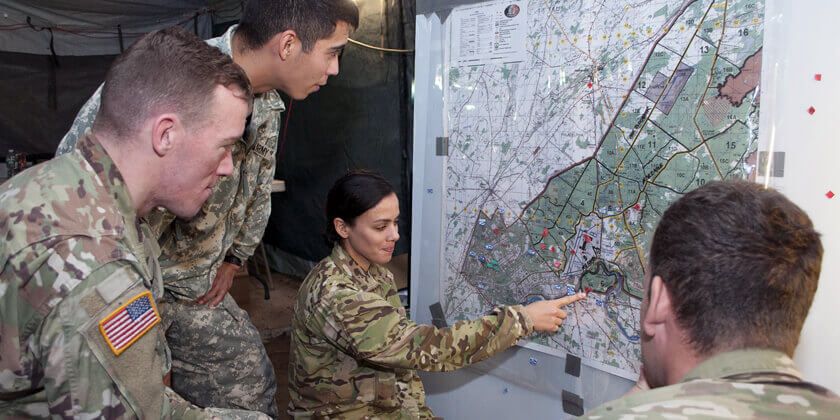 Now, the only annuitants who need to submit an ROE are those who receive a paper check to a foreign address. Previously, the legal representatives for all incapacitated annuitants were required to submit an ROE twice each year.
Now, the only annuitants who need to submit an ROE are those who receive a paper check to a foreign address. Previously, the legal representatives for all incapacitated annuitants were required to submit an ROE twice each year.
There is a new overview and a downloadable PDF fact sheet of the eligibility verification requirements for annuitants on our “Manage Your SBP Annuity” webpage. We hope this information will help our customers better understand their role in keeping their annuity accounts current.
Retired & Annuitant Pay is rolling out new, helpful Status Notifications to keep you in the loop as forms or documents you submit move through the retired pay or annuitant pay processing cycles. The Status Notifications will be sent primarily via SmartDoc email, so make sure you have an up-to-date email in your myPay profile so you can receive them.
Read more about the Status Notifications project in this newsletter article.
Please contact your TRICARE regional contract. DFAS cannot set up these allotments. They must be set up by TRICARE through the regional contractors. Please note: only Retirees can set up allotments from their pay. Allotments cannot be paid from SBP or SSIA annuity pay.
The information to set up allotments through the regional contractors is as follows:
TRICARE East
Humana Military
1-800-444-5445
Allotments can be set up online or via phone. For more information on setting up allotments, visit https://www.humanamilitary.com/selectfees or call 1-800-444-5445.
TRICARE West
Health Net
1-844-866-9378
Allotments can be setup online, via telephone self-service, or by paper application. For more instructions on setting up allotments, visit https://www.hnfs.com/content/hnfs/home/tw/bene/enroll/allotment.html or call 1-844-866-9378.
TRICARE Overseas
International SOS
For Country Specific Toll-Free Numbers, visit: http://www.tricare-overseas.com/contact-us
Please contact your country-specific number via phone for more information about setting up your allotment.
We have new tools and information to assist you with the SF 1174 for claiming the retiree’s Arrears of Pay. We can now deposit an Arrears of Pay (AOP) payment directly to an eligible claimant’s bank account instead of mailing a check. And we have an online upload option that will provide you with status notifications. Please see the How to Claim Arrears of Pay Using the 1174 page for details.
We have new tools and information to assist you with the DD Form 2656-7 for starting a Survivor Benefit Plan Annuity. We have a Form Wizard to help fill out the form correctly and easily. And we have an online upload option that will provide you with status notifications. Please see the Start an SBP Annuity page for details.
And we have an online upload option that will provide you with status notifications. Please see the Start an SBP Annuity page for details.
Please see our new webpage for current typical processing time frames: How Long Does It Take?
As part of our commitment to continually improving our customer service, R&A Pay is expanding the use of emailed SmartDocs as a way to communicate about changes to your account and actions that may be needed. Email notifications will speed up the time it takes to notify you about your account. If you don’t yet have an email address in myPay, please add one now so you can receive these email notifications.
A treasury mandate requires us to pay our customers electronically. Most military retirees and annuitants getting paper checks need to set up direct deposit. Start direct deposit now.
Most military retirees and annuitants getting paper checks need to set up direct deposit. Start direct deposit now.
Direct Express® Debit Card Program provides members who do not have a bank account an alternative to payment by EFT.
Pay Verification / Proof of Income
Survivor Benefit Plan Information
Get My 1099R
Correct My 1099R
Change My Arrears of Pay Beneficiary
Start or Change Direct Deposit
Change My Address
Manage My Allotments
Start International Direct Deposit
Report a Retiree's Death
Report an SBP Annuitant's Death
The most convenient way to manage your retirement account is through myPay, our online account management system.
myPay Login Instructions:
If you've never logged into myPay
If you forgot your login ID
If you forgot your password
Page updated Oct 13 2022
That’s a bold headline, especially if you a retired enlisted military member only bringing in a little over a thousand dollars a month in retirement pay.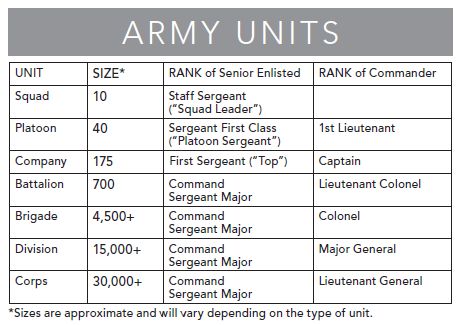 But it’s true. A military retirement is worth well over a million bucks. In some cases it is worth millions of dollars.
But it’s true. A military retirement is worth well over a million bucks. In some cases it is worth millions of dollars.
Before we get too deep into this, I want to define what I am talking about. I’m talking about two factors – the long term value in regard to how much you will receive in direct pension over the lifetime of your retirement benefits and the value of the retirement benefits including healthcare coverage, and other benefits. Combined, these benefits are easily worth over a million dollars, even if you don’t have the spending power of a million dollars right now.
Let’s look at an example of retirement pay for an average military career. Since military members are eligible for retirement benefits at 20 years, we will use a reasonable rank and service time for our examples.
It is reasonable to assume that the average enlisted member will be able to retire at 20 years having achieved the rank of E-7, and the average officer should be able to retire at 20 years at the rank of O-5. Of course there will be outliers based on when you served, your career field and other factors, but these ranks and service times should apply to the majority of careers (if anything I am aiming on the conservative side because many people choose to serve longer than the 20 year mark, earning an extra 2.5%-3.5% on their retirement pay per additional service year, depending on whether they take the high 3 retirement plan or the Redux retirement plan).
Of course there will be outliers based on when you served, your career field and other factors, but these ranks and service times should apply to the majority of careers (if anything I am aiming on the conservative side because many people choose to serve longer than the 20 year mark, earning an extra 2.5%-3.5% on their retirement pay per additional service year, depending on whether they take the high 3 retirement plan or the Redux retirement plan).
Track your TSP and other investments with Personal Capital’s free financial dashboard
As we mentioned, we will look at a military retiree with 20 years service at the ranks of E-7 for enlisted and O-5 for officers. The base pay for these ranks in 2009 is:
Most retirees at 20 years will receive 50% of their base pay, which would equal the following amounts:
 20
20The next factor to consider is that military retirement pay will be there day in and day out. There are few places in the world that someone can receive a lifetime pension starting at or around age 40. Many military retirees will receive a monthly cash payment for over 40 years. When you add in cost of living adjustments and inflation adjustments, we’re talking about some serious cash!
Using the numbers above from a recently retired E-7 or O-5, we get the following lifetime payments (note: these military retirement pay numbers are not adjusted for inflation and do not include any COLA increases; this is not a planning tool, but for illustration purposes only. Your specific retirement benefits will vary based on your situation):
 00
00Even without COLA or other inflation adjustments, we can see that we are reaching some serious numbers. Each additional year you serve before you retire can add another 2.5% to your monthly and annual pay, and each higher pay grade you achieve can add hundreds, or even thousands of dollars per year. As previously mentioned, the numbers used in this article are meant to be a conservative estimate.
Visit PersonalCapital.com
OK, there is a minimal TriCare payment, but compared to what civilians pay, it is basically a non-issue. Benefits for retired military members are also guaranteed – they won’t drop you after you have required expensive procedures or for pre-existing conditions. Guaranteed medical coverage is a huge blessing in today’s American society. Here is a little more information about kinds of insurance available to civilians: comparing individual and group health insurance. Hopefully that will hep you better understand the value of military retiree medical benefits!
Guaranteed medical coverage is a huge blessing in today’s American society. Here is a little more information about kinds of insurance available to civilians: comparing individual and group health insurance. Hopefully that will hep you better understand the value of military retiree medical benefits!
Military sponsored medical benefits are incredibly valuable, especially as you get older and when they cover your spouse. There are very few civilian plans that are similar to this. Most people spend several thousand dollars per year for basic medical coverage, and this doesn’t include out of pocket expenses for doctors visits, medical procedures, prescription medication and other associated costs. It would not be unreasonable to place a value of $10,000 per year on military retiree medical benefits, even for a healthy individual. Add a spouse to the benefits, guaranteed coverage, little to no out of pocket expenses for complex medical procedures, and other factors, and the medical benefits alone can be worth hundreds of thousands of dollars or more over the course of a lifetime (and in some instances, into the millions of dollars for people who receive complex medical care over a long term period).
I won’t even try to assign a value to these benefits because they don’t apply to all military retirees equally. Some people may practically live on base, visiting the base clubs, shopping at the exchanges, using the gyms, auto hobby shops, etc. and other people may not live near a base and may not be able to take advantage of any of these benefits. So this category falls in the “good deal if you can get it” benefit, but not a core part of the equation. But it is still worth mentioning because many retirees save a lot of money each year by shopping on base.
One challenge to the analysis is that the military pension includes a cost of living adjustment, so the amount of the income stream has to rise every year by the rate of inflation.
Another problem is that no one knows how long the pensioner will live, so it’s difficult to predict how long the pension will be paid out.
Finally, the calculated lump sum has to be invested in a safe and stable asset to make sure that it survives for decades. Unfortunately, the safe and stable assets have a very low yield, so it takes a larger lump sum to produce an income stream big enough to pay the pension.
The answer to these puzzles involves the mathematical process of “discounting”.
Accountants and actuaries devote entire careers to studying asset yields, human longevity, and other risks. They calculate the statistical probability that a certain lump sum will be able to pay a particular pension for the necessary number of years.
The good news for pension recipients is that the calculations are much more accurate when the analysis is simultaneously applied to hundreds of thousands of pensions as a group. Even better, the Department of Defense can rely on the number-crunching skills of another giant bureaucracy of inflation-adjusted payments: Social Security.
The mathematical details of discounting an inflation-adjusted annuity are well beyond the scope of this post. There’s not an easy formula to convert that $100/day pension to a precise lump sum. However, there are a few simpler estimates that are reasonably close to the more complicated methods.
There’s not an easy formula to convert that $100/day pension to a precise lump sum. However, there are a few simpler estimates that are reasonably close to the more complicated methods.
The easiest estimate assumes that a military pension keeps up with inflation. This eliminates the more complicated factors of correcting future dollars for inflation. If a military pension keeps up with inflation then the pension’s value in today’s dollars stays constant. The lump-sum value of the pension is the total amount to be received during the rest of the veteran’s life:
A 38-year-old veteran receiving $3000/month with a COLA might reasonably look forward to 35 more years of life. The estimate of the present value of their pension would be
The life-expectancy estimate ignores other discounting factors in favor of simplicity and speed. Its main advantage is that a veteran can quickly estimate a lump sum for their own personal expected lifespan. Veterans in good health with long-lived ancestors may decide that they have 40 or even 50 years of retirement, raising the current value of their pension.
Its main advantage is that a veteran can quickly estimate a lump sum for their own personal expected lifespan. Veterans in good health with long-lived ancestors may decide that they have 40 or even 50 years of retirement, raising the current value of their pension.
Another quick estimate is to assume that the pension is the income stream from a lump sum of Treasury Inflation-Protected Securities (TIPS). TIPS are an extremely safe and stable asset with built-in inflation protection. The market for buying and selling TIPS is huge and liquid so their prices are fairly accurate.
One flaw of this estimate is that, unlike a military pension, when the pensioner dies there’s still a lump sum of TIPS generating a stream of income. Another drawback is that a TIPS’ maturity (now a maximum of 30 years) is usually less than the pensioner’s remaining life expectancy.
The advantage of this estimate is simplicity and speed:
A January 2009 Treasury auction sold 20-year TIPS at an inflation-adjusted annual percentage yield of 2. 5%. So for that $3000/month pension,
5%. So for that $3000/month pension,
Another estimate of the lump-sum value of an inflation-adjusted pension is a commercial annuity. The annuity market is generally regarded as liquid because insurance companies compete to offer the “best” price without losing money. However, they still charge more than the actual value of the annuity to make their profit.
Insurance companies could be unable to make annuity payments or even go bankrupt and should be considered a riskier source of annuity payments than TIPS or other government bonds.
One of the “less risky” annuities comes from an agency sponsored by the federal government– the Thrift Savings Plan. TSP annuities are actually purchased from an insurance company and are not guaranteed by the federal government, but the insurance company is presumably charging a smaller fee (to sell a large volume of annuities) and the annuity’s cost would be closer to its value.
TSP annuities are priced each month and do not offer full protection against inflation. The advantage of estimating a pension’s lump-sum value from a TSP annuity is its lower price and the TSP website’s calculator. Assuming that the $3000/month pension is paid to a 38-year-old veteran and limited to 3% annual inflation:
$1.4 million is the price that a veteran would pay in the market to buy a TIPS portfolio or an annuity that would yield their inflation-adjusted pension of $3000/month for the rest of their life. Other research analyzes the theoretical cost of annuities and discounted values– only the cost and not its market price. (This includes a research paper on military pensions– the citation is in the book.)
These estimates range from about $1 million to $1.2 million. They’re only theoretical estimates. These annuities can’t actually be purchased like the assets of the other estimates, but they’re a more conservative estimate of the probabilities of longevity and other risk factors.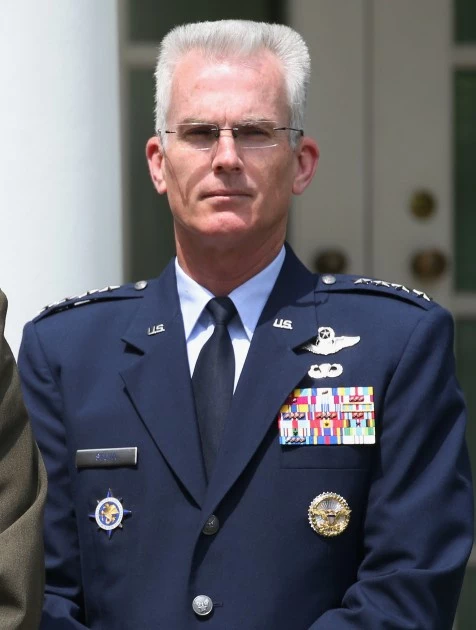
Let’s get back to the veteran who’s just finished 10 years of service and is wondering if it’s worth staying in the military for another decade. After an analysis of the pension’s present value, which sounds more compelling now: $100/day, or lifetime income of over $1 million?
Thousands of dollars coming in on a regular basis quickly add up over the years. Add in increases for inflation, essentially free health care, and other benefits and you can see how the value of a military retirement can quickly be worth millions of dollars over a lifetime.
I didn’t stay in long enough to qualify for military retirement benefits – I separated from the USAF with an Honorable discharge after 6.5 years of service. Part of me looks at the military retirement system with a bit of longing. It is a great system for those who qualify and I would love to be able to receive military retirement benefits for the rest of my life. However, separating from the military was the best move for me at the time and I have no regrets regarding my separation or my military service. I am proud to have served and the military is a large part of who I am today.
However, separating from the military was the best move for me at the time and I have no regrets regarding my separation or my military service. I am proud to have served and the military is a large part of who I am today.
*disclaimer about this article: The calculations are for illustrative purposes only and do not reflect the exact retirement benefits you will receive. This is a simplified look at military retirement benefits and does not take many factors into consideration, including taxes, disability benefits, inflation, COLA, and other factors.
Federal Law No. 76-FZ of May 27, 1998 (as amended on 07/14/2022) "On the status of military personnel" (as amended and supplemented, effective from 07/25/2022)
Article 23. Dismissal of citizens from military service and the right to employment
Dismissal of citizens from military service and the right to employment
1. Servicemen - citizens who are doing military service under a contract and have not reached the age limit for military service, cannot be dismissed from military service without their consent until they acquire the right to a pension for long service, with the exception of cases of early dismissal on grounds established by the Federal Law "On Military Duty and Military Service".
(as amended by Federal Laws No. 75-FZ of June 28, 2002, No. 141-FZ of November 11, 2003)
(see the text in the previous version)
Military personnel - citizens whose total duration of military service is 10 years or more, who are registered as in need of residential premises in the federal executive body or federal state body in which military service is provided for by federal law, without their consent cannot be dismissed from military service upon reaching the age limit for military service, for health reasons or in connection with organizational and staff measures without providing them with housing or housing subsidies, except as provided for in paragraph three of this clause.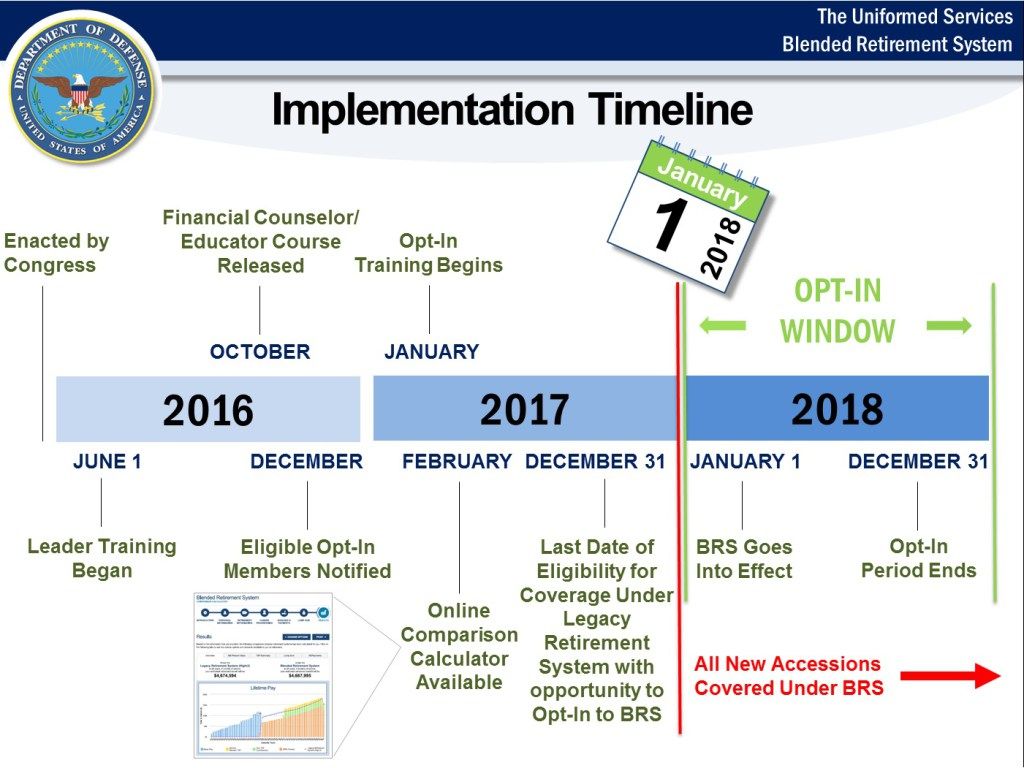 If these servicemen wish to receive living quarters not at the place of dismissal from military service, they are provided with living quarters at their chosen place of residence in the manner prescribed by paragraph 14 of Article 15 of this Federal Law.
If these servicemen wish to receive living quarters not at the place of dismissal from military service, they are provided with living quarters at their chosen place of residence in the manner prescribed by paragraph 14 of Article 15 of this Federal Law.
(as amended by Federal Laws No. 145-FZ of 04.06.2014, No. 97-FZ of 20.04.2015)
(see the text in the previous edition)
In cases where military personnel are citizens specified in paragraph two of this paragraph, refused the proposed housing located at the place of military service or at the chosen place of residence, which meets the requirements established by the legislation of the Russian Federation, or refused the housing subsidy or did not submit the documents necessary for the provision of housing or housing subsidies, within 30 days from the date of notification by the federal executive body or the federal state body, in which military service is provided for by federal law, of their readiness to provide housing or a housing subsidy, not counting the period of temporary disability of military personnel - citizens, their stay on vacation, on a business trip and other circumstances that objectively preclude the possibility of submitting the specified documents (including the time of holding events related to the receipt by military personnel - citizens of these documents in state authorities, local governments and organizations authorized to issue such documents), the consent of such military personnel - citizens to be discharged from military service upon reaching they do not require the age limit for military service, health reasons or in connection with organizational and staff measures without providing them with housing or housing subsidies. At the same time, the procedure for notifying military personnel - citizens of their readiness to provide them with housing or a housing subsidy and the procedure for the submission by military personnel - citizens of the documents necessary for the provision of housing and housing subsidies, are established by the federal executive body or the federal state body in which military service is provided for by federal law . The specified military personnel - citizens in the event of their dismissal from military service upon reaching the age limit for military service, health status or in connection with organizational and staff measures without providing them with living quarters or housing subsidies, are provided with living quarters in the form and manner provided for by this Federal law.
At the same time, the procedure for notifying military personnel - citizens of their readiness to provide them with housing or a housing subsidy and the procedure for the submission by military personnel - citizens of the documents necessary for the provision of housing and housing subsidies, are established by the federal executive body or the federal state body in which military service is provided for by federal law . The specified military personnel - citizens in the event of their dismissal from military service upon reaching the age limit for military service, health status or in connection with organizational and staff measures without providing them with living quarters or housing subsidies, are provided with living quarters in the form and manner provided for by this Federal law.
(paragraph introduced by Federal Law No. 97-FZ of 04.20.2015; as amended by Federal Law No. 145-FZ of 04.06.2014)
(see the text in the previous edition)
Military personnel - citizens, total duration of military service of which is 10 years or more, subject to dismissal from military service upon reaching the age limit for military service, health status or in connection with organizational and staffing measures, in the last year of military service by the Ministry of Defense of the Russian Federation (other federal executive body or federal a state body in which military service is provided for by the federal law) at the request of a serviceman - a citizen, a state housing certificate is issued for the purchase of housing for a family in a place of residence chosen after dismissal from military service in the manner determined by the Government of the Russian Federation.
(as amended by Federal Laws No. 141-FZ of 11.11.2003, No. 145-FZ of 04.06.2014)
(see the text in the previous edition)
military service under the contract, the losses caused to them in connection with this are subject to compensation in full. The moral damage caused by such dismissal is subject to compensation by a court decision on the basis of the will of the serviceman. These servicemen are reinstated in military service in their previous (and with their consent - equal or not lower) positions and are provided with all types of allowances that were not received after unjustified dismissal. This period is included in the total duration of military service and the period determined for the assignment of the next military rank.
The reinstatement in military service of servicemen unreasonably dismissed from military service is carried out in accordance with the Regulations on the procedure for military service.
3. No longer valid from January 1, 2013. - Federal Law of 08.11.2011 N 309-FZ.
- Federal Law of 08.11.2011 N 309-FZ.
(see the text in the previous edition)
in connection with organizational and staffing activities without the right to a pension, payment of a salary according to military rank is retained for one year after dismissal. The procedure for paying salary according to military rank is determined by the Government of the Russian Federation.
(clause 4 as amended by Federal Law No. 309-FZ of 08.11.2011)
(see the text in the previous edition)
employment and social security:
provision by state employment service bodies as a matter of priority, taking into account their specialty in state organizations;
preservation within three months after dismissal from military service for citizens who worked before conscription (entry) for military service in state organizations, the right to enter work in the same organizations, and for those who served in military service on conscription - also the right to a position not lower than occupied before conscription for military service;
(as amended by Federal Law No. 1-FZ of 09.02.2009)
1-FZ of 09.02.2009)
(see the text in the previous version) remuneration for long service, a percentage increase in wages, the provision of social guarantees related to length of service, if the interval between the day of dismissal from military service and the day of employment (admission to an educational organization) did not exceed one year, and veterans of military operations in the territory other states, veterans who performed military service in a state of emergency and in armed conflicts, and citizens whose total duration of military service on a preferential basis is 25 years or more, regardless of the duration of the break;
(as amended by Federal Laws No. 122-FZ of 22.08.2004, No. 213-FZ of 24.07.2009, No. 185-FZ of 02.07.2013)
(see the text in the previous edition)
leaving the job for which they entered for the first time, with a reduction in the staff;
ensuring that citizens discharged from military service with the right to a pension, for health reasons or in connection with organizational and staff measures, receive vocational education without paying them stipends during the period of study;
(as amended by Federal Law No. 122-FZ of August 22, 2004)
122-FZ of August 22, 2004)
(see the text in the previous edition) acquiring a household in the manner determined by the Government of the Russian Federation;
provision no later than one month from the date of application of citizens discharged from military service, places for their children in general education and preschool educational organizations and summer health camps, regardless of ownership;
(as amended by the Federal Law of 02.07.2013 N 185-FZ)
(see the text in the previous edition) when paying a one-time remuneration for length of service, a percentage increase in wages, providing other social guarantees related to the length of service in public service, regardless of the term of dismissal from military service and the day of admission to public service.
(as amended by Federal Law No. 122-FZ of August 22, 2004)
(see the text in the previous edition)
environmental conditions, including remote ones, where a district coefficient and percentage wage increases are established, when applying for a job in these districts and localities after they have been discharged from military service upon reaching the age limit for military service, health status, in connection with organizational - regular events or the end of the period of military service, regardless of the duration of the break, the period of military service in calendar terms in the indicated regions and localities is counted in the length of service in order to receive percentage bonuses to wages in the manner determined by the Government of the Russian Federation.
Single mothers of servicemen - citizens undergoing military service on conscription, are given a preferential right to remain at work in case of a reduction in the number or staff of employees.
(as amended by Federal Law No. 141-FZ of November 11, 2003)
(see the text in the previous edition)
The paragraph is no longer valid. - Federal Law of August 22, 2004 N 122-FZ.
(see the text in the previous edition)
6. In order to ensure the employment of citizens discharged from military service and members of their families, structures for their employment and vocational training are being created in the system of the state employment service.
7. Citizens dismissed from military service upon reaching the age limit for military service, for health reasons or in connection with organizational and staff measures, having a total duration of military service of 20 years or more, until January 1, 2015, shall be paid monetary compensation in the amount of the land tax actually paid by them and the tax on the property of individuals in the manner and amount established by the Government of the Russian Federation.
(Clause 7 was introduced by Federal Law No. 122-FZ of 22.08.2004, as amended by Federal Law No. 309 of 08.11.2011-FZ)
(see the text in the previous edition)
Article 22. Litigation against military personnel and the right to legal assistance. Performance of notarial acts with the participation of military personnel and members of their families Article 24
An analysis of the appeals of persons dismissed from military service to the courts and military prosecutors to protect their rights indicates the need for a detailed explanation of the procedure for excluding discharged military personnel from the lists of personnel of military units and carrying out with them calculations. In accordance with Article 38 of the Federal Law of March 28, 1998 No. 53-ФЗ “On military duty and military service”, the end of military service is the date of exclusion of a serviceman from the lists of personnel of a military unit. A dismissed serviceman must be excluded from the specified lists on the day of the expiration of the term of military service (dismissed ahead of schedule - no later than the day the term of military service expires) and no later than one month from the date of receipt by the military unit of an extract from the order on dismissal from military service, except for cases specially provided for by law (being on vacation, inpatient treatment, etc.).
A dismissed serviceman must be excluded from the specified lists on the day of the expiration of the term of military service (dismissed ahead of schedule - no later than the day the term of military service expires) and no later than one month from the date of receipt by the military unit of an extract from the order on dismissal from military service, except for cases specially provided for by law (being on vacation, inpatient treatment, etc.).
Until that day, servicemen are handed over cases, position, and the necessary settlements are made with them, including full provision of monetary allowances, other payments, clothing items and, in some cases, food rations according to established norms. The procedure for handing over cases and positions is determined by Articles 90–92 of the Charter of the Internal Service of the Armed Forces of the Russian Federation. The deadline for submitting cases is set depending on the official position of the serviceman. Persons whose positions are not specified in article 90 of the named Charter, this period is determined by the senior commander (chief).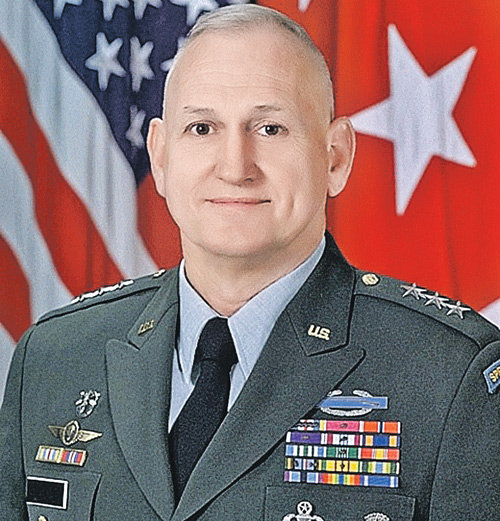
In accordance with the Order of the Minister of Defense of the Russian Federation of December 30, 2011 No. 2700 "On Approval of the Procedure for Providing Monetary Allowance to the Servicemen of the Armed Forces of the Russian Federation", settlements with the dismissed serviceman must be made within five days.
According to article 34 of the Regulations on the procedure for military service, approved by Decree of the President of the Russian Federation of September 16, 1999, No. 1237, until all the necessary calculations are made with the serviceman, he is not excluded from the lists of personnel of the military unit without his consent. In a number of cases, military personnel are provided with all or certain types of allowance not at the place of service, but in other military units or organizations. However, this circumstance does not relieve the commanders of military units from the obligation to exclude such servicemen from the lists of personnel of the unit upon dismissal from service only after they receive the allowances due. It should be specially noted that the failure of the command to comply with this condition in most cases in practice is an unconditional basis for the court to recognize the order to exclude a serviceman from the lists of personnel of the military unit as illegal and to restore the serviceman to the lists of personnel of the military unit from the date of issuance of such an illegal order. Federal Law No. 306-FZ of November 7, 2011 “On the monetary allowance of military personnel” provides for the payment of a one-time allowance to dismissed military personnel upon dismissal, depending on the total duration of their military service: with less than 20 years of service - two salaries of monetary maintenance, 20 years or more - seven salary salaries. The amount of this allowance is increased by one salary for military personnel awarded state awards or awarded honorary titles of the USSR or the Russian Federation during the period of military service. The specified allowance is not paid to the following persons: those dismissed in connection with the transfer to service in other state bodies, who did not pass the test, as well as those dismissed on the so-called "discrediting grounds" - for example, in connection with the failure of the serviceman to fulfill the terms of the contract.
It should be specially noted that the failure of the command to comply with this condition in most cases in practice is an unconditional basis for the court to recognize the order to exclude a serviceman from the lists of personnel of the military unit as illegal and to restore the serviceman to the lists of personnel of the military unit from the date of issuance of such an illegal order. Federal Law No. 306-FZ of November 7, 2011 “On the monetary allowance of military personnel” provides for the payment of a one-time allowance to dismissed military personnel upon dismissal, depending on the total duration of their military service: with less than 20 years of service - two salaries of monetary maintenance, 20 years or more - seven salary salaries. The amount of this allowance is increased by one salary for military personnel awarded state awards or awarded honorary titles of the USSR or the Russian Federation during the period of military service. The specified allowance is not paid to the following persons: those dismissed in connection with the transfer to service in other state bodies, who did not pass the test, as well as those dismissed on the so-called "discrediting grounds" - for example, in connection with the failure of the serviceman to fulfill the terms of the contract. 9in peacetime period of military service, for health reasons, in connection with organizational and staffing measures, at their own request, in connection with the transfer to service in other bodies, as well as the total duration of military service of which is more than 20 years, are entitled to monetary compensation for unreceived clothing property for personal use, the right to receive which arose during the last 12 months of military service. In accordance with articles 29and 31 of the Regulations on the procedure for passing military service upon dismissal, the provision of leave to a serviceman is carried out in full until the day the term of his military service expires.
9in peacetime period of military service, for health reasons, in connection with organizational and staffing measures, at their own request, in connection with the transfer to service in other bodies, as well as the total duration of military service of which is more than 20 years, are entitled to monetary compensation for unreceived clothing property for personal use, the right to receive which arose during the last 12 months of military service. In accordance with articles 29and 31 of the Regulations on the procedure for passing military service upon dismissal, the provision of leave to a serviceman is carried out in full until the day the term of his military service expires.
If it is impossible to use the main and additional holidays before the specified time, they can be granted to a serviceman upon his dismissal sequentially, without a gap between holidays. In this case, the exclusion of a serviceman from the lists of personnel of the military unit is carried out at the end of the last of the holidays and after the surrender of affairs and positions.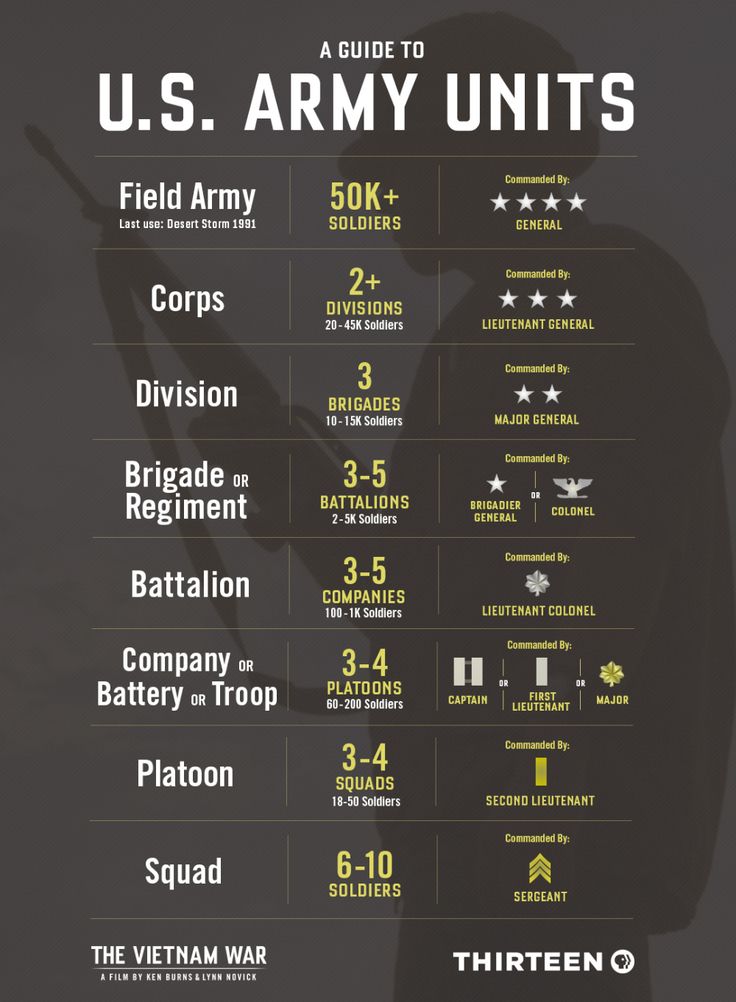 The main leave is granted in proportion to the time served and is calculated by dividing its established duration by 12 and multiplying the received number of days by the number of full months of military service that have elapsed before the expected day of exclusion of the serviceman from the lists of personnel of the military unit. The number of incomplete days and months is rounded upwards. Additional leave in the year of dismissal from military service, including veterans of military operations, is provided to military personnel in full.
The main leave is granted in proportion to the time served and is calculated by dividing its established duration by 12 and multiplying the received number of days by the number of full months of military service that have elapsed before the expected day of exclusion of the serviceman from the lists of personnel of the military unit. The number of incomplete days and months is rounded upwards. Additional leave in the year of dismissal from military service, including veterans of military operations, is provided to military personnel in full.
In the event that it is impossible to timely exclude a serviceman from the lists of personnel of the military unit, on the day of his dismissal, the calculation of the unused time of the main leave is calculated and provided to the serviceman.
In addition, the legislation provides for a personal leave of 30 days, which is granted to military personnel with a total duration of military service of more than 20 years, in the year of dismissal from military service for health reasons, in connection with organizational and staffing activities, or in one year from three years before reaching the age limit for military service.